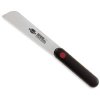peterng
Enthusiastic Novice
Hello,
I am in the process of splicing some new rib tips in. I had spotted some great pictures that were in a thread here a month or so ago which I can not find now.
I am sure I went through every thread that had an attachment back to November.
Do those pictures ring a bell with anyone ? Maybe the author will see this and point me to the thread.
Thanks !
Peter
I am in the process of splicing some new rib tips in. I had spotted some great pictures that were in a thread here a month or so ago which I can not find now.
I am sure I went through every thread that had an attachment back to November.
Do those pictures ring a bell with anyone ? Maybe the author will see this and point me to the thread.
Thanks !
Peter









